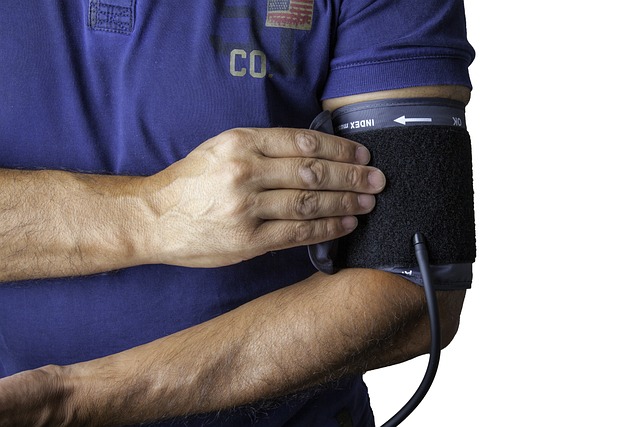Comprehensive Overview of Fat Removal Options in Ireland
Fat removal procedures are gaining attention across Ireland for their ability to target specific fat deposits without the need for invasive surgery. These procedures cater to individuals seeking to enhance their body contouring efforts. Results can vary significantly based on the individual, with various techniques available to address localized fat concerns, making it essential to understand the options and factors that influence outcomes.

What Are Fat Removal Procedures?
Fat removal procedures encompass a range of medical treatments designed to eliminate unwanted fat cells from specific areas of the body. These treatments fall into two main categories: surgical procedures like liposuction that physically remove fat cells, and non-surgical methods that destroy or shrink fat cells through various technologies. In Ireland, these procedures are performed by qualified plastic surgeons, dermatologists, and trained aesthetic practitioners in clinics across major cities including Dublin, Cork, Galway, and Belfast.
Surgical fat removal typically involves making small incisions and using specialized instruments to suction out fat cells permanently. Non-surgical alternatives use technologies such as cryolipolysis (fat freezing), radiofrequency, ultrasound, or laser energy to target fat cells without incisions. The choice between surgical and non-surgical approaches depends on factors including the amount of fat to be removed, desired downtime, and individual health considerations.
Understanding Non-Surgical Fat Reduction Techniques?
Non-surgical fat reduction has revolutionized the aesthetic industry in Ireland, offering patients effective alternatives to traditional liposuction. Cryolipolysis, commonly known by the brand name CoolSculpting, freezes fat cells at controlled temperatures, causing them to die naturally and be eliminated by the body over several weeks. This FDA-approved treatment is widely available in Irish clinics and typically requires multiple sessions for optimal results.
Radiofrequency treatments use controlled heat to target fat cells while simultaneously tightening the skin. Popular options include Vanquish and truSculpt, which can treat larger areas in single sessions. Ultrasound-based treatments like UltraShape use focused ultrasound energy to selectively destroy fat cells without affecting surrounding tissues. These procedures generally require no downtime and allow patients to return to normal activities immediately.
Laser lipolysis represents another non-surgical approach, using laser energy to heat and destroy fat cells. SculpSure is one such treatment available in Ireland, offering 25-minute sessions that can target multiple areas simultaneously. While results from non-surgical treatments develop gradually over 2-3 months, they offer the advantage of minimal discomfort and no recovery period.
Exploring Targeted Fat Reduction Methods
Targeted fat reduction methods allow practitioners to address specific problem areas that commonly concern Irish patients. The abdomen remains the most requested treatment area, with both surgical and non-surgical options proving effective for reducing belly fat and creating more defined waistlines. Love handles, technically known as flanks, respond well to most fat reduction techniques and are frequently treated alongside abdominal areas.
Thigh treatments focus on inner and outer thigh fat, areas that often resist traditional weight loss efforts. Double chin reduction has gained particular popularity with the introduction of injectable treatments like Kybella, which uses deoxycholic acid to dissolve fat cells beneath the chin. This treatment typically requires 2-4 sessions spaced 6-8 weeks apart.
Arm fat reduction addresses the upper arm area, commonly called “bingo wings,” which can be effectively treated with both surgical and non-surgical methods. Back fat, including bra bulge areas, responds well to various technologies, though larger volumes may require surgical intervention for optimal results. The key to successful targeted fat reduction lies in proper patient selection and realistic expectation setting by qualified practitioners.
Fat removal costs in Ireland vary significantly depending on the chosen procedure, treatment area size, and clinic location. Surgical liposuction typically ranges from €2,500 to €6,000 per area, with multiple areas often qualifying for package pricing. Non-surgical treatments generally cost between €400 and €1,200 per session, with most patients requiring 2-3 sessions for desired results.
| Treatment Type | Provider Example | Cost Estimation |
|---|---|---|
| Surgical Liposuction | Blackrock Clinic, Dublin | €3,000-€5,500 per area |
| CoolSculpting | Thérapie Clinic, Multiple locations | €450-€800 per cycle |
| SculpSure Laser | Cosmetic Doctor, Dublin | €500-€900 per session |
| truSculpt RF | Rejuvenation Clinics, Cork | €400-€700 per area |
| Kybella Injections | Face Clinic, Dublin | €600-€900 per session |
Prices, rates, or cost estimates mentioned in this article are based on the latest available information but may change over time. Independent research is advised before making financial decisions.
The Irish health system does not typically cover cosmetic fat removal procedures, making them private pay treatments. Many clinics offer financing options or payment plans to make treatments more accessible. Geographic location within Ireland can influence pricing, with Dublin and other major cities generally commanding higher fees than smaller towns.
Fat removal options in Ireland continue to evolve with advancing technology and increasing demand. Whether choosing surgical or non-surgical approaches, patients benefit from consulting with qualified practitioners who can assess individual needs and recommend appropriate treatment plans. Success rates remain high across all treatment modalities when performed by experienced providers, though realistic expectations and proper aftercare remain crucial for optimal outcomes.
This article is for informational purposes only and should not be considered medical advice. Please consult a qualified healthcare professional for personalized guidance and treatment.




